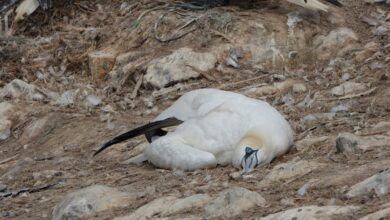Is there a link between tornadoes and the climate crisis?

A tornado outbreak was once again in the headlines on Wednesday after a series of twisters tore through parts of the American South.
Nearly two dozen people were injured when tornadoes swept across central Texas as part of a storm system that was expected to spawn more twisters and damaging winds throughout the day.
The National Weather Service reported on Tuesday that twisters had struck north of the city of Austin, Texas, and over the state border in Bossier City and Shreveport, Louisiana.
It has been a destructive and deadly few months. Two people were killed and more than a dozen homes destroyed by twisters last week in South Carolina. Last month, two people were killed in Florida during severe storms, and a man died near New Orleans in what was the city’s second strongest tornado on record.
In December, a storm front guided by a La Nina weather pattern spawned ferocious tornadoes that killed dozens over five US states.
“One word: remarkable; unbelievable would be another,” Northern Illinois University meteorology professor Victor Gensini told AP at the time. “It was really a late spring type of setup in in the middle of December.”
Warm weather was a crucial ingredient in the December tornado outbreak, but there is much debate among scientists on whether the climate crisis is affecting their frequency.
They are tricky to study, partly because they are relatively short-lived compared to other weather systems. In the years before cell phones, data largely relied on people spotting tornadoes and calling them into the National Weather Service.
Tornadoes are whirling, vertical air columns that form from thunderstorms and stretch to the ground. They travel with ferocious speed and lay waste to everything in their path.
Thunderstorms occur when denser, drier cold air is pushed over warmer, humid air, conditions scientists call atmospheric instability. As that happens, an updraft is created when the warm air rises. When winds vary in speed or direction at different altitudes — a condition known as wind shear — the updraft will start to spin.
These changes in winds produce the spin necessary for a tornado. For especially strong tornadoes, changes are needed in both the wind’s speed and direction.
“When considerable variation in wind is found over the lowest few thousand feet of the atmosphere, tornado-producing ‘supercell thunderstorms’ are possible,” said Paul Markowski, professor of meteorology at Pennsylvania State University.
There’s usually a lot of wind shear in the winter because of the big difference in temperature and air pressure between the equator and the Arctic, Mr Gensini said.
But usually, there’s not a lot of instability in the winter that’s needed for tornadoes because the air isn’t as warm and humid, Mr Gensini said.
In December, spring-like temperatures across much of the Midwest and South helped bring warm, moist air that helped form thunderstorms. Some of this is due to La Nina, which generally brings warmer than normal winter temperatures to the Southern US. But scientists also expect atypical, warm weather in the winter to become more common as the planet warms.
“The worst-case scenario happened. Warm air in the cold season, middle of the night,” said John Gordon, a National Weather Service meteorologist.
Once the storm formed, exceptionally strong wind shear appears to have prevented the tornadoes from dissipating, experts say. Tornadoes are thought to die off when thunderstorm updrafts lose energy.
Scientists are still trying to sort out the many conflicting factors about whether human-caused climate change is making tornadoes more common — or even more intense. About 1,200 twisters hit the US each year — though that figure can vary — according to the NOAA National Severe Storms Laboratory. No other country sees as many.
Attributing a specific storm to the effects of climate change remains very challenging. Less than 10 per cent of severe thunderstorms produce tornadoes, which makes drawing conclusions about climate change and the processes leading up to them tricky, said Harold Brooks, a tornado scientist at the National Severe Storms Laboratory.





